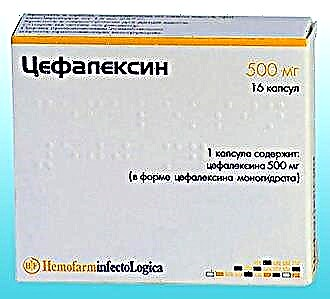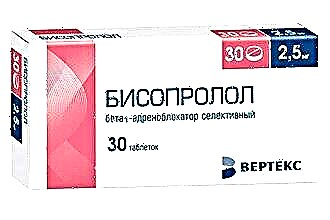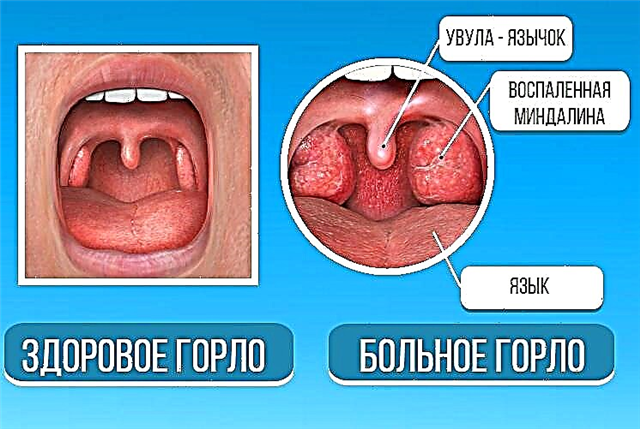Maxillary sinusitis is an inflammatory process that occurs in the maxillary sinuses, which are an integral part of the anatomical system of the nose. The disease is characterized by symptoms that clearly distinguish it from other ailments of the upper respiratory tract. Most of all, sinusitis is dangerous by the presence of purulent contents in the accessory pockets, which can threaten the health and life of the patient. Therefore, it is very important to know how to treat purulent sinusitis.
What is sinusitis, and how dangerous it is
 If we consider sinusitis from the point of view of the causes of the appearance and development of symptoms, then the following main types of ailment can be distinguished:
If we consider sinusitis from the point of view of the causes of the appearance and development of symptoms, then the following main types of ailment can be distinguished:
- Catarrhal. It occurs against the background of a runny nose and is actually a complication of it, the discharge is watery and transparent. At first, the patient may not even notice this, however, a disdain for simple rhinitis leads to the spread of inflammation in the sinus tissue and a more serious form of sinusitis.
- Serous. It develops as a result of improper treatment of the catarrhal form. The amount of secretion secreted by the goblet cells of the mucous membranes increases sharply. In order to bring it into the nasopharynx, the cilia of the special ciliated epithelium work with full load. If the sinusitis is bilateral, then the snot flows from the nose abundantly and constantly.
- Purulent. This is the most dangerous type of ailment that manifests itself after the bacterial microflora enters the air pockets. Actively multiplying and dying off in the process of fighting immune cells, it leads to the appearance of pus in the chambers, which intensifies the inflammatory process. The snot in this case takes on a yellowish or yellow-green tint.
It is the treatment of purulent sinusitis that requires special attention from both the patient and the doctor. The presence of a purulent focus in the immediate vicinity of organs of vital importance can lead to serious consequences:
- Damage to the orbit of the eye, deterioration of vision, sometimes its complete loss, if the optic nerve is affected.
- Penetration of infection through the auditory tube into the middle ear (acute otitis media).
- Painful neuritis due to damage to the facial nerve.
- Intracranial diseases: damage to the membranes of the brain (encephalitis, meningitis), penetration of pathogens into the cerebral bloodstream. Such complications are often fatal.
- Heart problems (myocarditis).
- Inflammatory processes in the genitourinary system (cystitis).
- Bronchial asthma or pneumonia.
- Deterioration or loss of smell.
Purulent sinusitis is especially dangerous for people with weakened immunity, pregnant women, children and the elderly. Their body often fights poorly against the causative agent of the disease itself, and not all medications can be used due to the presence of contraindications.
The clinical picture of purulent sinusitis
Purulent sinusitis can occur in two forms - chronic and acute.
Each of them has its own characteristics, due to the nature of the inflammatory process.
Symptoms of acute purulent sinusitis:
 Increased body temperature, reaching 39 degrees, severe chills.
Increased body temperature, reaching 39 degrees, severe chills.- Bursting pain in the projection of the affected accessory pocket (if sinusitis is bilateral, then on both sides of the nose), which increases with palpation or tilting.
- Headaches covering the entire head or shooting in the temple, neck, teeth, ear.
- Swelling of the nasal passages, leading to congestion. With a one-sided course of the disease, there is often alternate congestion, and bilateral sinusitis leads to complete congestion and the inability to breathe through the nose.
- Discharge from the nose, consisting of mucus and blotches of pus. The amount of outgoing secretion is less than in the serous form, and its consistency is thicker. The smell of snot is unpleasant.
- Outwardly noticeable swelling of the eyelids and bridge of the nose.
The chronic form of the disease differs from the acute one and can be recognized by the following signs:
- The headache is persistent, but not very severe.
- The patient becomes lethargic, feels weak, unwell.
- Nasal breathing is difficult, a feeling of congestion is present all the time, it does not respond well to vasoconstrictor drops.
- There is a pressing feeling in the area of the sinuses or the bridge of the nose.
- During the period of remission, a streak of pus is constantly observed flowing from the middle nasal passage. With exacerbation of discharge, abundant mucopurulent, green-yellow or grayish-brown color, sometimes interspersed with blood, clots can leave.
Only an otolaryngologist can correctly diagnose maxillary sinusitis on the basis of fluoroscopy or computed tomography data, and using special equipment: a rhinoscope or an endoscope. If a diagnosis of purulent sinusitis is diagnosed, treatment should be started immediately. Only the attending physician can develop a therapy regimen and decide how to treat the disease.
Why pus does not come out with sinusitis
Sometimes there are cases when all the symptoms of purulent sinusitis are present, and the exudate from the nose does not stand out, or at first the secret left, and after a while the outflow stopped. What does this mean?
Cases of self-healing in acute sinusitis do occur, although very rarely. In this case, the human body itself defeats the pathogen, and the symptoms of the disease disappear. In this case, part of the thickened exudate can remain in the chamber and contribute to the transition of the disease into a chronic form with irreversible changes in the parietal tissues of the sinus and possible exacerbations. In such cases, it is best to take a control X-ray to ensure complete recovery.
However, in the overwhelming majority of cases, the cessation of the outflow of mucus with an increase in symptoms indicates that the path for its evacuation is closed due to blockage of the anastomosis.
The reasons for this condition can be:
- increased tissue edema due to the spread of the inflammatory process;
- allergic edema of the narrow connecting canal;
- mechanical interference in the path of secretion (malignant or benign tumor, polyp, cyst, foreign object trapped in the accessory chamber);
- blockage of the anastomosis with very thick mucus.
The presence of an infected exudate in the sinus for a long time can lead to melting of soft tissues or the breakthrough of pus into neighboring organs (brain, ear, eye).
In addition, increasing in volume, the accumulated mucus presses on the walls of the air chambers, causing severe pain.
To cure a patient with complicated purulent lesions of the accessory pockets, an integrated approach is required. You can use medications, flushes or puncture. The main thing that needs to be done is to destroy the pathogen, remove puffiness from the connecting canal, dilute mucous accumulations and ensure their evacuation by any possible means.
Directions of drug therapy
Pus in the sinuses is the result of the activity of the bacterial microflora, therefore antibiotic therapy is required. Self-activity in the selection of drugs can lead to the most unpleasant consequences, therefore, the patient must coordinate all his actions with the doctor.
Antibiotics are prescribed based on the results of a laboratory examination of a nasal swab, or with the widest possible spectrum of suppressed microflora. The drugs are prescribed in the form of tablets or capsules, but in severe cases, they are predominantly used by injection.
In modern otolaryngological practice, the following types of antibiotics are common for the treatment of acute sinusitis:
- Cephalosporins. The most effective drugs of the 3rd and 4th generations, to which pathogens have not yet developed resistance. These include Cefixime, Ceftriaxone, Ceftibuten, Cefalexin.

- Macrolides. They are distinguished by the highest safety and the lowest number of adverse reactions among all antibiotics. The most famous are Azithromycin, Clarithromycin, Spiramycin, Roxithromycin.
- Semi-synthetic penicillins (beta-lactams). Some types of penicillins (inhibitor-protected) are active against microflora, which has acquired resistance to other penicillans. The most common are Amoxicillin, Ampicillin, Flemoxin solutab, Amoxiclav.
- Fluoroquinolones. The mechanism of action is fundamentally different from other antibiotics, which allows them to fight the most resistant strains of microorganisms (Ofloxacin, Moxifloxacin, Ciprofloxacin).
With uncomplicated sinusitis or as an auxiliary therapy, local antibiotics are prescribed, injected into the nasal passages - Bioparox, Isofra, Polydex.
The swelling of the tissues of the nasal cavity and anastomosis is removed with the help of decongestants - vasoconstrictor aerosols and topical drops. Sprays are preferred because the cloud of suspension created allows for more even coverage of the mucous membranes. Such agents as Sanorin, Farmazolin, Galazolin, Xylometazolin, Nazivin, Tizin are used. Depending on the active ingredient, the edema is reduced and breathing is relieved after 5-15 minutes. Drops based on oils of pine, mint, fir (Pinosol) allow to normalize the work of the epithelium and moisturize it.
You should also take antihistamines systemically to reduce swelling and suppress allergens. Adults take pills, syrups are produced for children under 6 years of age. It is better to use antihistamines of the latest generations with fewer side effects (Claritin, Zyrtec, Gismanal, LoraGeksal). Older drugs (Diazolin, Suprastin, Tavegil) can cause drowsiness and inhibition of reactions.
To liquefy the accumulated mucus, mucolytics based on bromhexidine (Bromhexidine) and acetylcysteine (ACC) are prescribed. Rinofloimucil, Mukaltin and herbal remedies (Cinnabsin, Sinupret) are also recommended. Achieving this goal is also facilitated by drinking plenty of teas, herbal decoctions, fruit drinks and compotes.
Flushing as a way to avoid puncture
Modern developments are aimed at avoiding tissue trauma and evacuating exudate without punctures. In clinics and hospitals, it is suggested to flush the sinuses using the "cuckoo" and YAMIK methods:
- The "cuckoo", due to the creation of intermittent pressure, allows the saline solution to get inside the sinus and flush out pathological accumulations from there. The liquid is poured into one nasal passage and sucked out by an ENT combine or an aspirator from the other.
 The YAMIK procedure is performed using a special catheter with balloons inflating in the nostril and nasopharynx. Air is removed from the blocked area and a vacuum is created. Thanks to this, the fistulas open and allow stagnant mucus to escape from the sinus. After removing the exudate, washing is carried out with the help of medical solutions of Miramistin or Furacilin.
The YAMIK procedure is performed using a special catheter with balloons inflating in the nostril and nasopharynx. Air is removed from the blocked area and a vacuum is created. Thanks to this, the fistulas open and allow stagnant mucus to escape from the sinus. After removing the exudate, washing is carried out with the help of medical solutions of Miramistin or Furacilin.
For all its merits, washing can not always help to defeat purulent sinusitis. Moreover, they are not recommended for pregnant women, small children, old people. Their use is also limited by the presence of certain diseases (epilepsy, bleeding).
Puncture is a reliable way to quickly cure purulent sinusitis
In cases where medications and physiotherapy are powerless, the only reliable way to urgently remove pus from the sinuses is puncture. It is performed in otolaryngology departments of hospitals and is a minimally invasive operation. The puncture scheme looks like this:
- the patient is anemized nasal passages using turunda with adrenaline and decongestants;
- local anesthesia is carried out using lidocaine, novocaine or trimecaine;
- the doctor pierces the sinus wall with a needle through the nose, pours in the solution with a syringe and sucks out the purulent secretion;
- after removing the pus, the chambers are washed with antibiotics.
If the sinusitis is bilateral, then you have to make two punctures one after the other. Usually 2-3 punctures are enough to heal.

 Increased body temperature, reaching 39 degrees, severe chills.
Increased body temperature, reaching 39 degrees, severe chills.
 The YAMIK procedure is performed using a special catheter with balloons inflating in the nostril and nasopharynx. Air is removed from the blocked area and a vacuum is created. Thanks to this, the fistulas open and allow stagnant mucus to escape from the sinus. After removing the exudate, washing is carried out with the help of medical solutions of Miramistin or Furacilin.
The YAMIK procedure is performed using a special catheter with balloons inflating in the nostril and nasopharynx. Air is removed from the blocked area and a vacuum is created. Thanks to this, the fistulas open and allow stagnant mucus to escape from the sinus. After removing the exudate, washing is carried out with the help of medical solutions of Miramistin or Furacilin.

